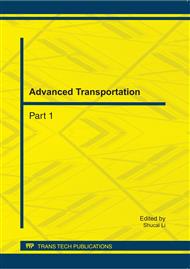p.931
p.935
p.942
p.947
p.952
p.956
p.960
p.964
p.971
Evaluating Travel Time Reliability Based on Fuzzy Logic
Abstract:
Travel time reliability, as a measure of performance, is attracting more and more attention because unreliable transportation information hinders travelers’ decision making and creates difficulties for authorities to manage network operations. Since travel time reliability is closely related to the stochastic properties of the day-to-day travel time distribution, several statistical measures have been proposed, including standard deviation, coefficient of variation, buffer index, misery index and so on. Each of these measures is derived from travel time distribution but captures only one or two characteristics of travel time. In this paper, an effort is made to evaluate travel time reliability incorporating as many characteristics of travel time as possible based on fuzzy logic. The basic rules are: (1) the larger the variance is, the more unreliable the travel time is; (2) the larger the travel times of unlucky travelers are, the more unreliable the travel time is; (3) the larger the distribution skews to the left, the more unreliable the travel time is. The proposed methodology has been tested and analyzed with field data.
Info:
Periodical:
Pages:
952-955
Citation:
Online since:
September 2011
Authors:
Keywords:
Price:
Сopyright:
© 2011 Trans Tech Publications Ltd. All Rights Reserved
Share:
Citation:


